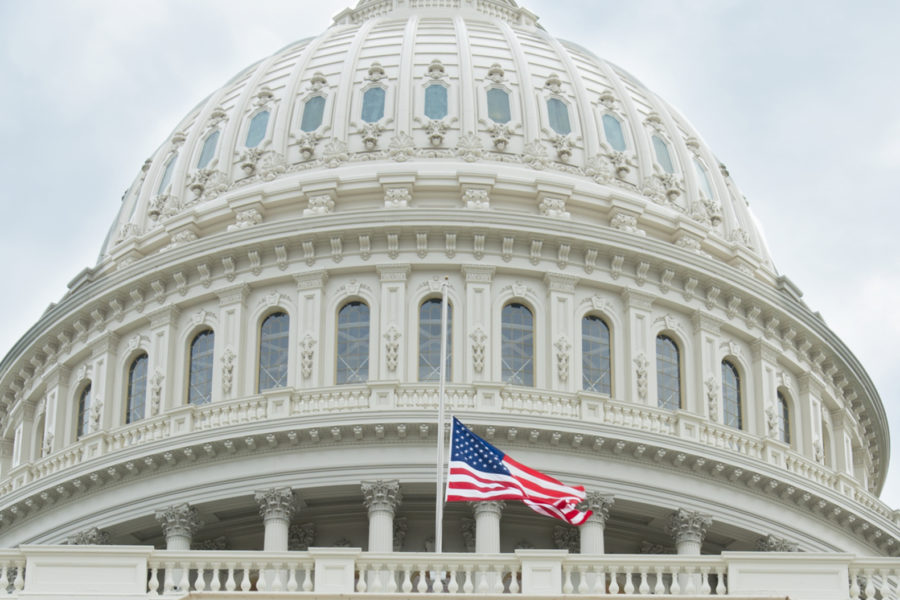The push to create a new Space National Guard got a major boost last week as a bipartisan team of Senators offered new legislation—even as the Pentagon works to craft details on a competing plan.
Sens. Dianne Feinstein (D-Calif.) and Marco Rubio (R-Fla.) introduced the Space National Guard Establishment Act on Feb. 16, joined by eight co-sponsors:
- Sen. Alex Padilla (D-Calif.)
- Sen. John Hickenlooper (D-Colo.)
- Sen. Lisa Murkowski (R-Alaska)
- Sen. Marsha Blackburn (R-Tenn.)
- Sen. Michael Bennet (D-Colo.)
- Sen. Rick Scott (R-Fla.)
- Sen. Mike Braun (R-Ind.)
- Sen. Kyrsten Sinema (I-Ariz.)
The 10 backers of the bill is down from the dozen that cosponsored a similar bill in May 2022. That effort died in committee, however, and efforts to insert the measure into the 2023 National Defense Authorization Act also failed. Now Feinstein and Rubio are reintroducing the bill to a new Congress.
There are more than 1,000 members of the Air National Guard involved today in space missions, spread among seven states and one territory—Alaska, California, Colorado, Florida, Hawaii, New York, Ohio, and Guam.
“The National Guard’s space units serve under the Air Force, which no longer has responsibility for the space mission,” Feinstein said in a statement. “They should serve under the Space Force with the rest of our space units and fix the organizational disconnect that is undermining their training, resourcing, and recruiting. Leaving the Guard’s space units under the Air Force is shortsighted and undermines our national security.”
Rubio added: “Creating a Space National Guard would boost our military readiness and increase efficiency. It would also ensure that the Space Force retains needed talent.”
The debate over creating a Space Guard has been underway since the Space Force was born in December 2019. Proponents want it to ensure Air National Guard units with space missions can retain their expertise, and argue that the cost of the change can be as little as several hundred thousand dollars for chaning name tapes, unit flags, and signs. They want Space-focused Guardsmen to be able to remain connected to their state missions, like disaster relief and humanitarian aid.
Critics—including the Biden administration—say a separate Space Guard would add layers of bureaucracy, extra cost that might run into the millions annually, and that there is no need to tie space-focused Guardsmen to state missions since the space missions they perform are federal in nature.
The House versions of the 2022 and 2023 defense authorization bills both included support for the Space Guard, but the measure did not survive the conference report either time.
Instead, the 2022 law included a requirement for a study and a report on how the Space Force should structure its reserve components, including a look at how much a Space National Guard would cost.
The Space Force has proposed what it calls the “Space Component”—a hybrid structure combining full-time and part-time Guardians. Advocates like its “lean and agile” approach and former Chief of Space Operations Gen. John W. “Jay” Raymond described it as the service’s “No. 1 legislative proposal” last year before he retired.
The 2023 NDAA directed the Secretary of Defense to submit a report on how the Space Component would work, including rules, regulations, and policies for allowing Guardians to move between full- and part-time duty, compete for promotion, and retire. The Space Force must also explain how to manage pay, benefits, and other factors for full- and part-time Guardians and detail changes in legislation needed to support the plan. That level of detail suggests lawmakers were leaning toward the Space Force proposals.
The Space Force report is due March 1, well in time for changes to be included in the 2024 NDAA if Congress approves.
The Department of the Air Force referred questions to the Office of the Secretary of Defense, which did not immediately respond.
